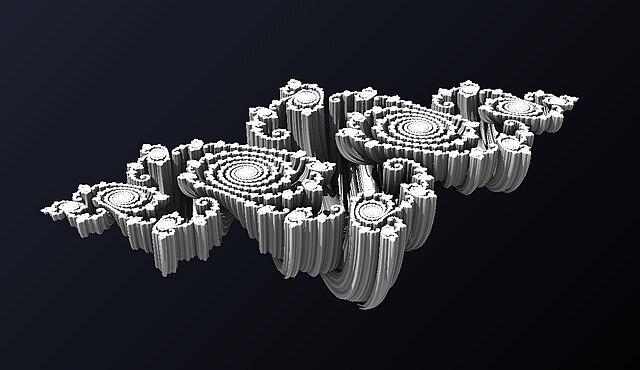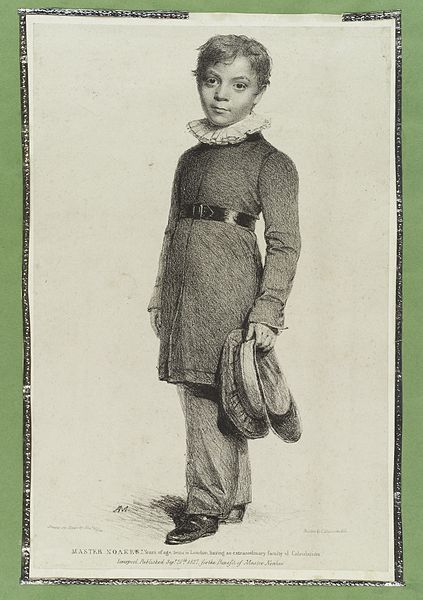In mathematics, the quaternion number system extends the complex numbers. Quaternions were first described by the Irish mathematician William Rowan Hamilton in 1843 and applied to mechanics in three-dimensional space. The algebra of quaternions is often denoted by H, or in blackboard bold by Quaternions are not a field, because multiplication of quaternions is not, in general, commutative. Quaternions provide a definition of the quotient of two vectors in a three-dimensional space. Quaternions are generally represented in the form
Quaternion plaque on Brougham (Broom) Bridge, Dublin, which reads: Here as he walked by on the 16th of October 1843 Sir William Rowan Hamilton in a flash of genius discovered the fundamental formula for quaternion multiplication i2 = j2 = k2 = i j k = −1 & cut it on a stone of this bridge
The Julia sets and Mandelbrot sets can be extended to the Quaternions, but they must use cross sections to be rendered visually in 3 dimensions. This Julia set is cross sectioned at the x y plane.
Sir William Rowan Hamilton MRIA, FRAS was an Irish mathematician, astronomer, and physicist. He was the Andrews Professor of Astronomy at Trinity College Dublin, and Royal Astronomer of Ireland, living at Dunsink Observatory.
Master Noakes, the mental calculator, 1827 lithograph
Quaternion Plaque on Broom Bridge
Irish commemorative coin celebrating the 200th anniversary of his birth





